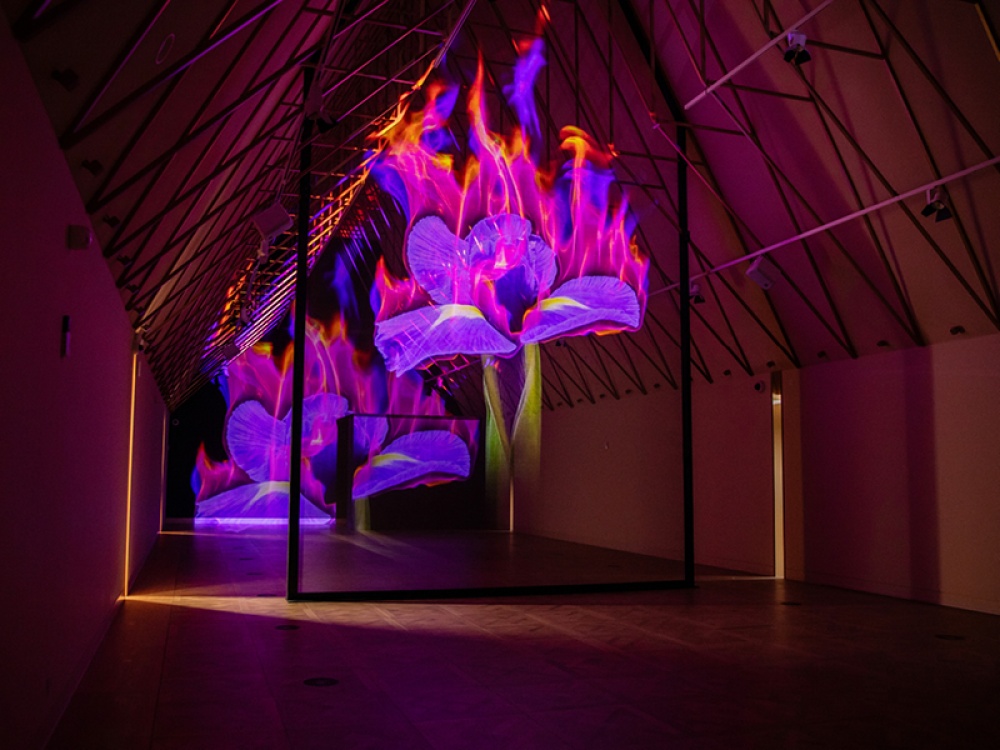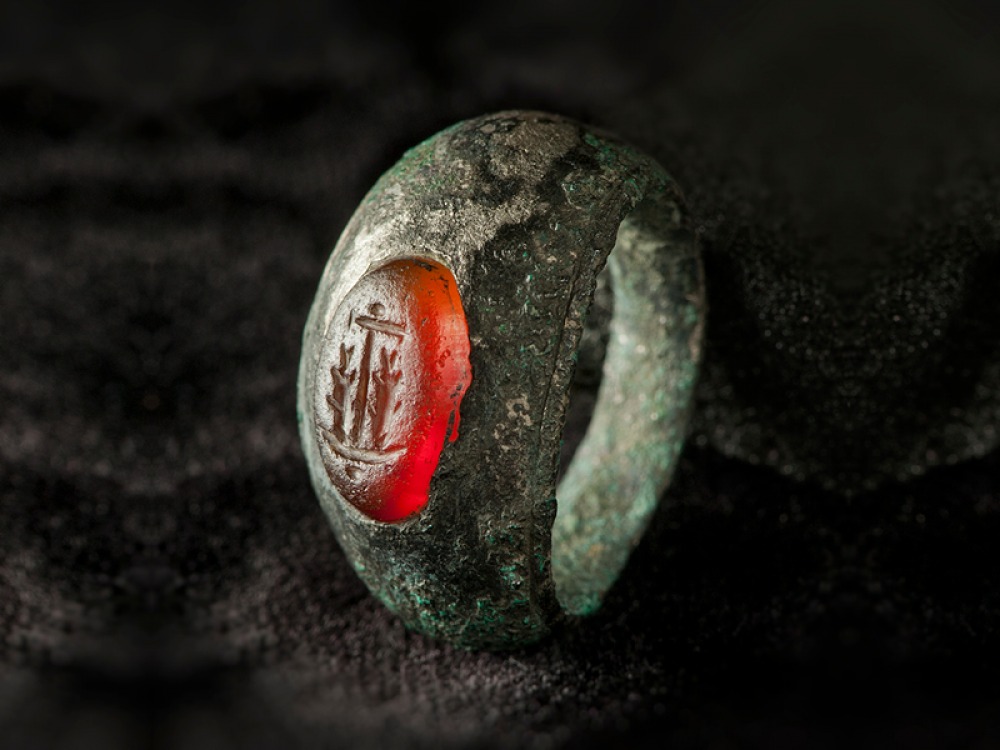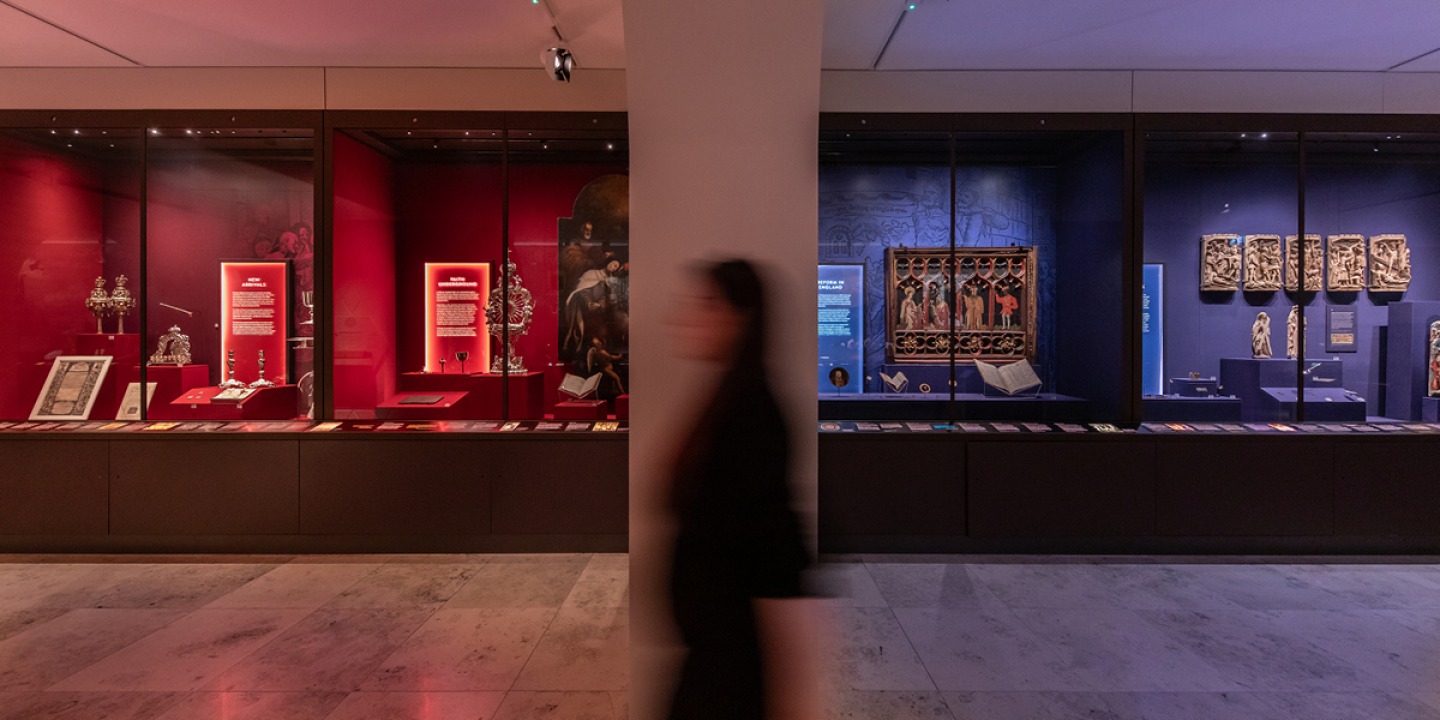Discover the Unique Faith Museum Now Open in Bishop Auckland

Be one of the first to explore the new Faith Museum at Auckland Castle
The Faith Museum explores the myriad ways in which faith has shaped lives and communities across Britain through rarely seen objects, national treasures, personal testimonies and contemporary commissions. The museum sits at the heart of The Auckland Project, a unique cultural destination in Bishop Auckland, County Durham, which includes Auckland Castle, art galleries, gardens, extensive parkland and a heritage railway.
Leading visitors on a journey through British history, the museum comprises a series of dynamic gallery spaces with an active programme of rotating displays and temporary exhibitions.
The ground floor traces a path through 6,000 years of faith, beginning in the Neolithic period with the powerfully tactile Gainford Stone and ending in the year 2000. The thematic displays feature over 250 objects, on loan from 50 national and local institutions and private lenders, which complement The Auckland Project’s own collection. The objects are sometimes beautiful, sometimes high-status, often enigmatic, and often poignant; they are witnesses to the impact of faith in Britain over thousands of years.
Read More: Dave Turner on His Lead Role in Ken Loach's New Film The Old Oak

The upper floor of the museum houses a diverse programme of temporary exhibitions and installations, reflecting contemporary issues and timeless ideas. The galleries will open with a display of works by 10 contemporary British artists, offering their individual perspectives on faith today. Dominating the Great Gallery upstairs, with its high-pitched ceiling, is a dramatic installation by Mat Collishaw, specially created for the space. This large-scale work is complemented by more intimate pieces in the adjacent galleries, inviting us to consider how faith can be both awe-inspiring and public, yet personal and private.
Walking through galleries housed in the 14th-century Scotland Wing of Auckland Castle, a never-before-displayed object found less than a mile from the Castle is one of the smallest and most remarkable items on show: the Binchester Ring. Excavated in 2014 at the Roman Fort Vinovium, this extraordinary silver ring with carved carnelian stone featuring images of an anchor and fish is rare early evidence of Christianity in Britain.
OTHER HIGHLIGHTS IN THESE GALLERIES INCLUDE:
• An early example of evidence of Jewish communities in Britain seen in an extraordinary object from the collection of the Ashmolean Museum, the 13th-century Bodleian Bowl.
• A copy of William Tyndale’s English translation of the New Testament from 1536, one of only a small number to have survived.
• A set of 20th century prayer beads owned by Lord Headley, believed to be the first Briton to have legitimately completed the Hajj pilgrimage to Mecca, having converted to Islam.
‘The objects and contemporary artworks on display
tell the story of how people in Britain have expressed
their faith throughout history’
The final gallery space invites visitors to reflect on three central questions present throughout the museum: Where do I belong? How do I live? and Am I alone? Among the artists featured are Newcastle-based artist Mani Kambo, Nicola Green, The Singh Twins, and Khadija Saye.
Jonathan Ruffer, founder of The Auckland Project, says: ‘The Faith Museum turned out to be the hardest piece of our jigsaw. We have tried to tell stories which put into context 6,000 years of human endeavour and the restlessness of the human spirit.’
Clare Baron, head of exhibitions at The Auckland Project, comments: ‘We look forward to opening the doors of the Faith Museum to visitors this autumn. The objects and contemporary artworks on display tell the story of how people in Britain have expressed their faith throughout history, often in a very personal way. I’d like to thank all the lenders, artists, advisors and funders who have helped to create a space for us all to reflect on and discuss what faith means to us.’

Read More: How South Tyneside's Foodie Heritage is Being Celerbated in a New Exhibition
Eilish McGuinness, chief executive at The National Lottery Heritage Fund, says: ‘It is such uplifting news that the Faith Museum will be open to the public in October, allowing an exploration of the heritage of faith in the UK spanning 6,000 years. We are proud to have supported the creation of the museum, as part of our wider investment in The Auckland Project, thanks to money raised by National Lottery players.’
The 740sqm museum has seen extensive conservation work undertaken on the historically significant Grade I listed Scotland Wing of Auckland Castle, with refurbishments overseen by Purcell architects. The new purpose-built extension designed by Níall McLaughlin Architects takes the form of a medieval tithe barn. Conceived as a sacred storehouse, the monolithic, pitched roof building was constructed using Cop Crag sandstone, local to the North East, and the same as used at Durham Cathedral.
The Faith Museum is supported by The National Lottery Heritage Fund, the Jerusalem Trust and the Kirby Laing Foundation.







